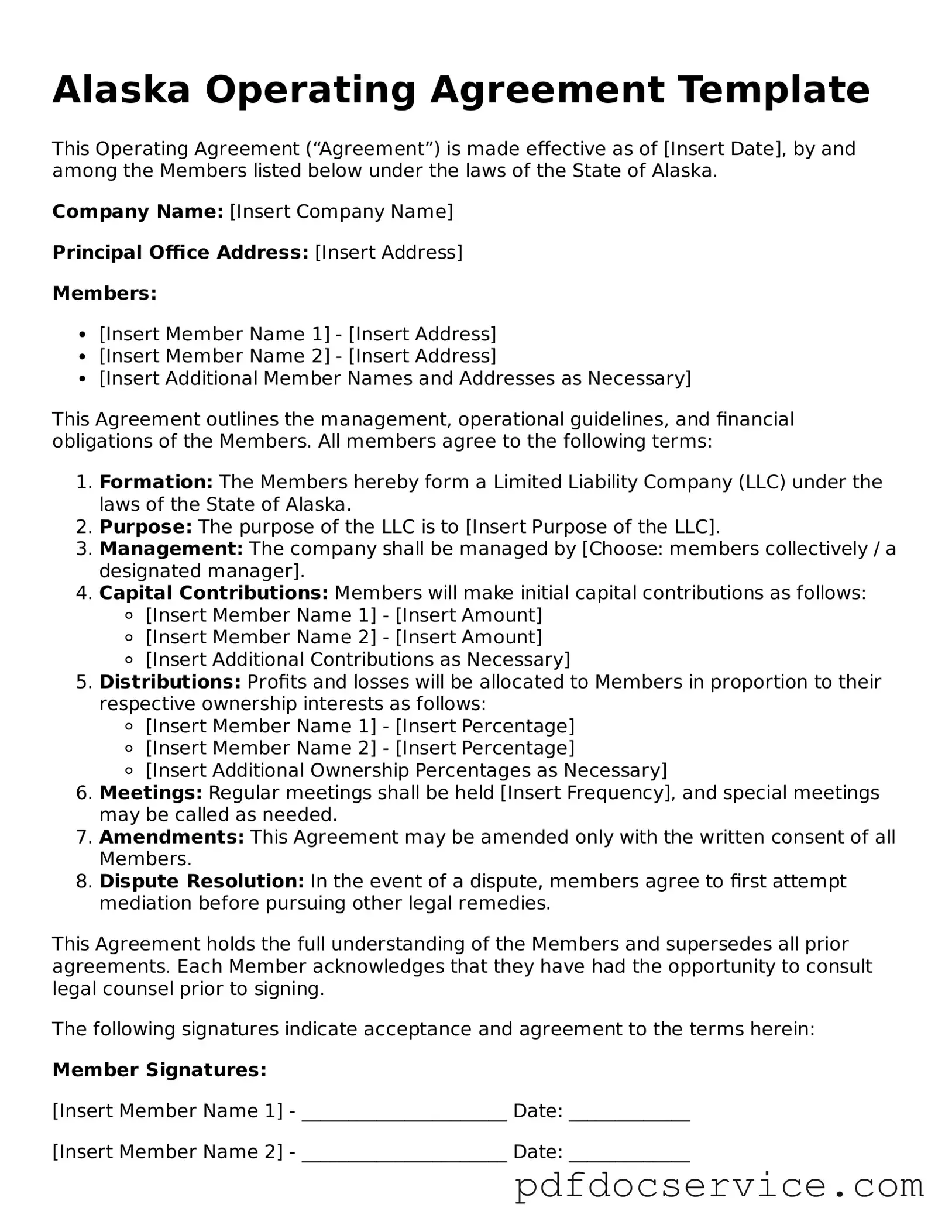What is an Alaska Operating Agreement?
An Alaska Operating Agreement is a legal document that outlines the management structure and operating procedures for a Limited Liability Company (LLC) in Alaska. It serves as an internal guideline for the members of the LLC, detailing their rights, responsibilities, and obligations. This agreement is crucial for ensuring that all members understand how the company will operate and how decisions will be made.
Is an Operating Agreement required in Alaska?
No, an Operating Agreement is not legally required in Alaska. However, it is highly recommended. Having an Operating Agreement can help prevent misunderstandings among members and provide clarity on how the business should be run. If disputes arise, this document can serve as a reference to resolve conflicts.
What should be included in an Alaska Operating Agreement?
While the specific contents can vary, an Alaska Operating Agreement typically includes:
-
The name and address of the LLC.
-
The purpose of the LLC.
-
The names and addresses of the members.
-
Details on how profits and losses will be distributed.
-
Procedures for adding or removing members.
-
Management structure and decision-making processes.
-
Provisions for handling disputes.
Including these elements can help ensure that all members are on the same page regarding the operation of the LLC.
How is an Operating Agreement created?
Creating an Operating Agreement can be straightforward. Members can draft the agreement themselves or seek assistance from a legal professional. It is important to ensure that the document reflects the members' intentions and complies with Alaska state laws. Once drafted, all members should review and sign the agreement to make it official.
Can an Operating Agreement be changed?
Yes, an Operating Agreement can be amended. Members may decide to make changes as the business evolves or as circumstances change. It is advisable to document any amendments in writing and have all members sign the updated agreement. This helps maintain clarity and prevents future disputes.
What happens if there is no Operating Agreement?
If an LLC does not have an Operating Agreement, it will be governed by Alaska's default LLC laws. This can lead to unintended consequences, as the state laws may not align with the members' wishes. Without a clear agreement, members might face challenges in decision-making and profit distribution, potentially leading to conflicts.
How do members resolve disputes in an Operating Agreement?
An Operating Agreement should include provisions for dispute resolution. Common methods include mediation or arbitration. These processes can help members resolve conflicts without resorting to litigation, which can be costly and time-consuming. Clearly outlining these procedures in the agreement can save time and preserve relationships among members.
Where can I find a template for an Alaska Operating Agreement?
Templates for an Alaska Operating Agreement can be found online through various legal websites. Many offer free or paid templates that can be customized to fit your LLC's specific needs. It is important to ensure that any template used complies with Alaska law and accurately reflects the intentions of the members.
